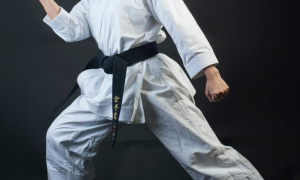
Taekwondo is more than just a martial art; it’s a cultural heritage and a dynamic sport that has captivated millions worldwide. From its ancient origins to its modern-day prominence, Taekwondo boasts a tapestry of intriguing facts that reflect its significance and appeal. In this article, we delve into 10 captivating Taekwondo facts that illuminate its history, techniques, and global impact.
Fact 1: Ancient Roots and Evolution
Taekwondo’s origins trace back to ancient Korea, where archaeological findings reveal early martial arts practices. A mural dating back to 50 B.C portrays figures engaged in martial arts techniques, echoing the art’s early existence. However, Taekwondo as we know it emerged in 1955 when Koreans sought to reclaim their cultural identity after Japanese influence. The art’s evolution symbolizes Korea’s resilience and determination.
Fact 2: Global Popularity and Practitioners
Taekwondo’s popularity transcends borders, with over 70 million practitioners across 188 countries. This martial art has taken root globally, with four million black belts exemplifying its impact. The inclusion of Taekwondo in movies starring icons like Jean Claude Van Damme and Chuck Norris has contributed to its widespread recognition.
Fact 3: Taekwondo Belt System
The intricate belt ranking system symbolizes a practitioner’s journey from novice to master. Progression belts – white, yellow, orange, green, purple, blue, brown, red, and black – signifies not just skill but also growth in character and discipline. Each belt represents a milestone, reflecting the art’s deep-rooted traditions.
Fact 4: Taekwondo’s Olympic Journey
Taekwondo’s journey to the Olympics is a tale of perseverance. First introduced as a demonstration sport in 1988 during the Seoul Olympics, it officially claimed its spot in 2000 at the Sydney Games. The Olympic stage showcases Taekwondo’s athleticism and artistry, exemplifying the spirit of competition.
Fact 5: Celebrities and Taekwondo
Beyond the dojang, Taekwondo has found its way onto the silver screen. Martial arts legends like Jackie Chan and Chuck Norris have featured Taekwondo techniques in their films, showcasing its dynamic and powerful nature. Their influence has propelled Taekwondo into popular culture from movies and TV shows to Anime.
Fact 6: The Unique Taekwondo Uniform (Dobok)
The traditional white dobok is more than attire; it embodies respect and tradition. Worn during formal ceremonies and belt tests, the dobok symbolizes a practitioner’s dedication to the art. Colored uniforms, reserved for special instances, reflect individual achievements and distinction.
Fact 7: The Tenets of Taekwondo
Taekwondo is not just about physical prowess; it emphasizes values. The five Tenets – Courtesy, Integrity, Perseverance, Self-Control, and Indomitable Spirit – shape practitioners both inside and outside the training hall. These principles are the foundation of a Taekwondo journey.
Fact 8: The Thrilling Sparring Technique
Taekwondo’s hallmark is its explosive sparring technique. With a focus on high-speed, powerful kicks, sparring embodies the art’s dynamic nature. Its inclusion as an Olympic event shows its utility as both an art form and a sport.
Fact 9: Taekwondo’s Symbolism in Patterns
Taekwondo practitioners engage in a series of choreographed movements called “patterns” or “forms.” These patterns are not just sequences of techniques; they hold symbolic significance. Each pattern represents different aspects of Taekwondo philosophy and history, often embodying principles like balance, power, and fluidity. As practitioners perform these intricate patterns, they are not only refining their physical techniques but also connecting with the art’s deeper meanings.
Fact 10: Taekwondo Training and Its Rigor
Taekwondo training is rigorous, encompassing a spectrum of techniques – from blocks and punches to kicks and open-handed strikes. It demands discipline, dedication, and perseverance, molding practitioners into skilled martial artists.
FAQ
Why do people love Taekwondo?
Taekwondo’s allure lies in its blend of physical fitness, mental discipline, and self-defense skills. The combination of athleticism and values makes it an enriching experience for practitioners of all ages.
What is interesting about Tae Kwon Do?
Taekwondo’s history, merging of self-defense and sport, and core Tenets make it a unique martial art. Its global reach and recognition highlight its appeal beyond Korea’s borders.
What are 2 historical facts about Tae Kwon Do?
Taekwondo’s historical roots trace back to early Korean martial arts practices and its formal establishment in 1955, signifying Korea’s reclamation of cultural identity.


